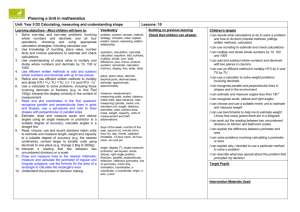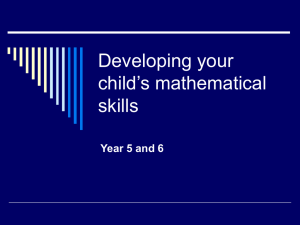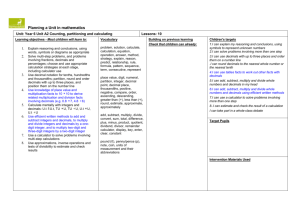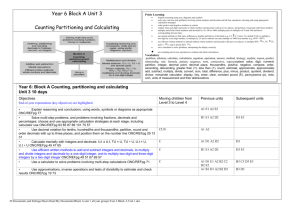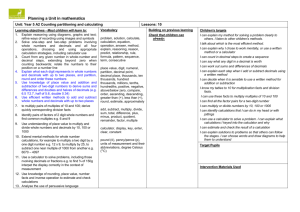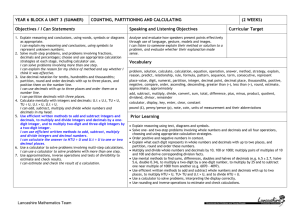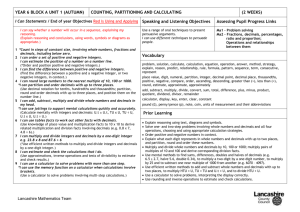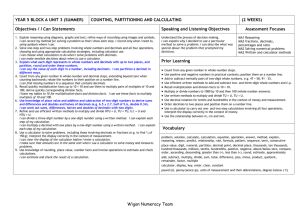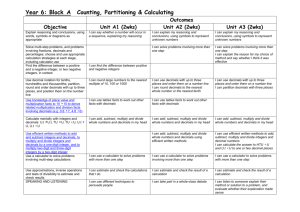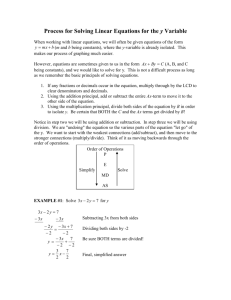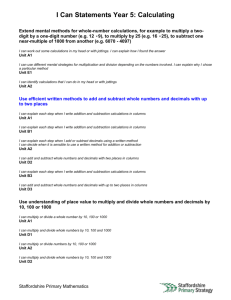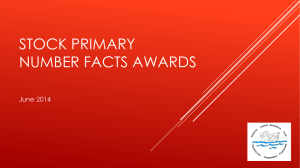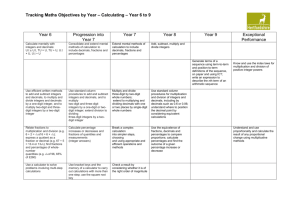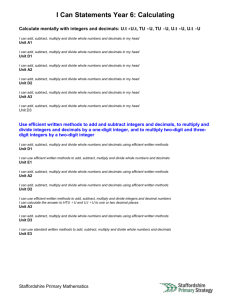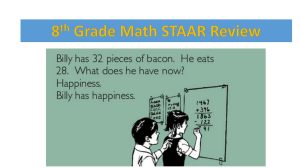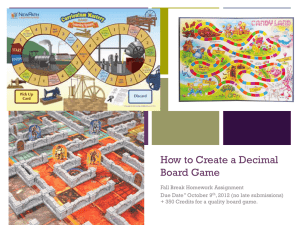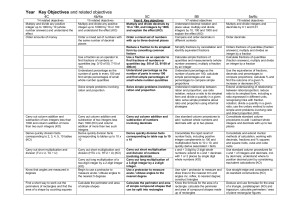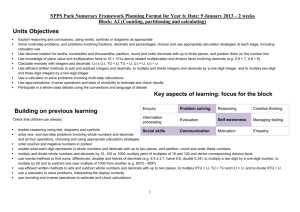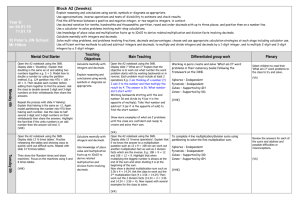Year 6 Unit 1 Block D - Calculating, measuring and understanding
advertisement
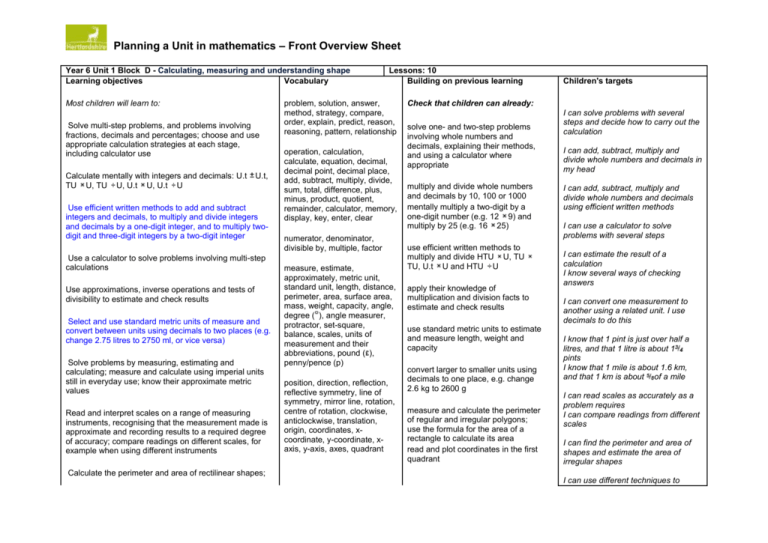
Planning a Unit in mathematics – Front Overview Sheet Year 6 Unit 1 Block D - Calculating, measuring and understanding shape Learning objectives Vocabulary Most children will learn to: Solve multi-step problems, and problems involving fractions, decimals and percentages; choose and use appropriate calculation strategies at each stage, including calculator use Calculate mentally with integers and decimals: U.t TU U, TU U, U.t U, U.t U U.t, Use efficient written methods to add and subtract integers and decimals, to multiply and divide integers and decimals by a one-digit integer, and to multiply twodigit and three-digit integers by a two-digit integer Use a calculator to solve problems involving multi-step calculations Use approximations, inverse operations and tests of divisibility to estimate and check results Select and use standard metric units of measure and convert between units using decimals to two places (e.g. change 2.75 litres to 2750 ml, or vice versa) Solve problems by measuring, estimating and calculating; measure and calculate using imperial units still in everyday use; know their approximate metric values Lessons: 10 Building on previous learning problem, solution, answer, method, strategy, compare, order, explain, predict, reason, reasoning, pattern, relationship operation, calculation, calculate, equation, decimal, decimal point, decimal place, add, subtract, multiply, divide, sum, total, difference, plus, minus, product, quotient, remainder, calculator, memory, display, key, enter, clear numerator, denominator, divisible by, multiple, factor measure, estimate, approximately, metric unit, standard unit, length, distance, perimeter, area, surface area, mass, weight, capacity, angle, degree ( ), angle measurer, protractor, set-square, balance, scales, units of measurement and their abbreviations, pound ( ), penny/pence (p) Read and interpret scales on a range of measuring instruments, recognising that the measurement made is approximate and recording results to a required degree of accuracy; compare readings on different scales, for example when using different instruments position, direction, reflection, reflective symmetry, line of symmetry, mirror line, rotation, centre of rotation, clockwise, anticlockwise, translation, origin, coordinates, xcoordinate, y-coordinate, xaxis, y-axis, axes, quadrant Calculate the perimeter and area of rectilinear shapes; Children's targets Check that children can already: solve one- and two-step problems involving whole numbers and decimals, explaining their methods, and using a calculator where appropriate multiply and divide whole numbers and decimals by 10, 100 or 1000 mentally multiply a two-digit by a one-digit number (e.g. 12 9) and multiply by 25 (e.g. 16 25) use efficient written methods to multiply and divide HTU U, TU TU, U.t U and HTU U apply their knowledge of multiplication and division facts to estimate and check results use standard metric units to estimate and measure length, weight and capacity convert larger to smaller units using decimals to one place, e.g. change 2.6 kg to 2600 g measure and calculate the perimeter of regular and irregular polygons; use the formula for the area of a rectangle to calculate its area read and plot coordinates in the first quadrant I can solve problems with several steps and decide how to carry out the calculation I can add, subtract, multiply and divide whole numbers and decimals in my head I can add, subtract, multiply and divide whole numbers and decimals using efficient written methods I can use a calculator to solve problems with several steps I can estimate the result of a calculation I know several ways of checking answers I can convert one measurement to another using a related unit. I use decimals to do this I know that 1 pint is just over half a litres, and that 1 litre is about 1 pints I know that 1 mile is about 1.6 km, and that 1 km is about of a mile I can read scales as accurately as a problem requires I can compare readings from different scales I can find the perimeter and area of shapes and estimate the area of irregular shapes I can use different techniques to estimate the area of an irregular shape by counting squares Use a range of oral techniques to present persuasive argument identify lines of symmetry in 2-D shapes; draw the position of a shape after a reflection or translation persuade people estimate, draw and measure acute and obtuse angles using an angle measurer or protractor calculate angles on a straight line Focus of using and applying Intervention Resources Used Teaching and learning focus Introductory teaching to assess and review learning Direct teaching of new knowledge, skills and concepts, with opportunities to practise and apply learning Lessons 1 2 3 Interactive whole class teaching 4 Consolidation and further practice 5 Interim review of achievement and progress 6 Intervention support Notes about teaching and learning focus - approaches, organisation, activities and resources Assessment for learning with groups 7 Enquiry, extension enrichment work, problem solving, reasoning 8 9 Summary assessment of progress over the unit with children 10
